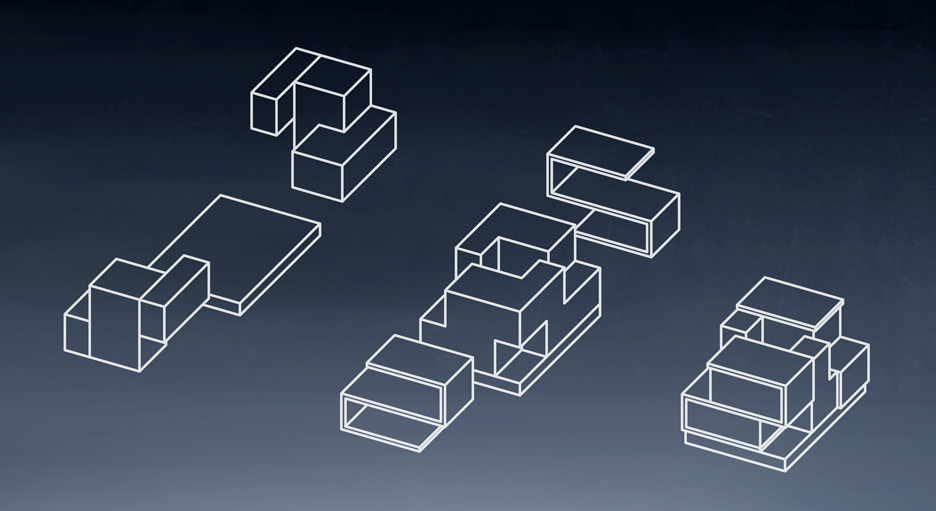Conceptual home for couples designed to split into two halves after divorce
This floating house is designed by Amsterdam-based Studio OBA to break apart, so unhappily married occupants can cast their spouses adrift.
Called Prenuptial Housing, the concept is the brainchild of self-proclaimed PR and pop culture expert Omar Kbiri.
In response to rising divorce rates, Kbiri approached Amsterdam-based Studio OBA to help realise his idea of a separating house, which he believes could make the break-up process less of an upheaval.
"With the increasing number of divorces each year, our concept is – regrettably – becoming more and more relevant," said Kbiri.
"I especially like the fact that we can stabilise the home front during an otherwise very hectic time. With this concept you namely don't need to relocate after a break-up."
The idea of a floating house emerged early on in the design process, with the team looking towards Amsterdam's plentiful canals and its strong design tradition for floating architecture for inspiration.
"As we all live in Amsterdam and see many houses in the canals, the idea of a separable floating house emerged quickly during our first meetings," explained Vincent Ringoir, who runs Studio OBA with fellow TU Delft students Xander den Duijn and Gerben van den Oever.
"When couples feel they are drifting apart, the house initiates a 'break up' by detaching the two units, which then go solo on the water."
The design comprises two independent structures that slot together in a Tetris-like formation to form a home for a couple.
But a simple connecting mechanism is designed to allow the two parts of the building to disengage and float apart should the relationship turn sour.
The building is designed to be constructed from lightweight carbon fibre and timber components that will help it to float.

"The challenge of the project was to design a house that consists of two autonomous units that appear to be one," Ringoir told Dezeen.
"Due to the way we designed it, the house responds to the flow of the relationship: when all is well, the house remains a unity," he continued.
"But when couples separate, the house – literally – drifts apart as well. And how nice would it be if separate units would one day reconnect again when a new relationship blossoms?"
The team imagines the house could be particularly popular among couples in Belgium, Portugal and Hungary, where divorce rates are among the highest in the world.
The team are planning a prototype to test the user-friendliness and performance of the design. Kbiri is also in discussion with investors, with plans to start taking orders for Prenuptial Housing in early 2017.